Border Terrier: breed description, upbringing and maintenance
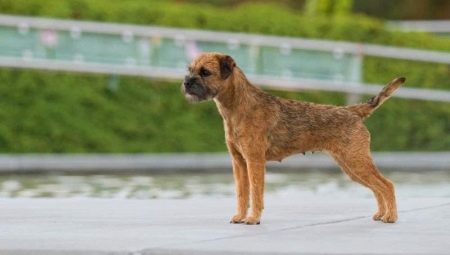
Probably, it is impossible to find another dog with such a huge supply of vital energy as the Border Terrier. Representatives of this breed never get tired and are constantly on the move, therefore they are often participants in various sports competitions. To raise such a pet healthy and beautiful, you need not only to know the rules for keeping it, but also to be able to compose a diet for it.
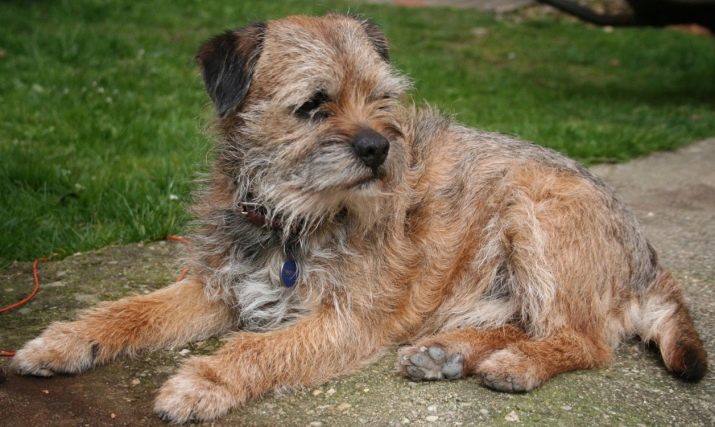
Origin story
The Border Terrier breed first appeared in the middle of the 18th century in one of the Anglo-Scottish provinces. These dogs owe their origin to hunters. In those days, hunting for a burrowing animal was especially popular, but it was difficult to catch it on the border of two regions located in mountainous terrain.
Therefore, hunters have worked for many years to breed powerful and extremely hardy dogs that are not afraid of the sharp fangs of animals and are able to penetrate deep into holes. In Scotland, the first Border Terriers were called Cockerdale Terriers, and in England, Riverdale Terriers.
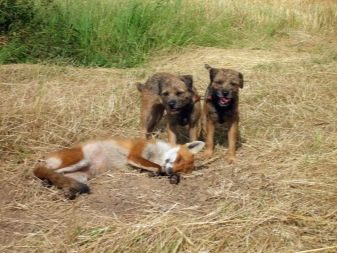
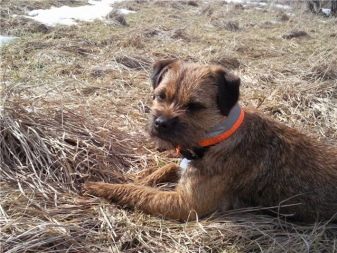
In 1920, the very first official standard of this breed was approved, its representatives were given the name Border Terrier, which means the hunting (border) terrier. Throughout its existence, representatives of this breed were used not only for hunting, but also for other areas. For example, the Swiss trained these dogs to save people.
As for European countries, boarders, as a rule, were kept in them to protect farms from the invasion of rodents.At the beginning of the twentieth century, sport fox hunting began to enjoy immense popularity, then the boarders finally began to be used for their intended purpose.
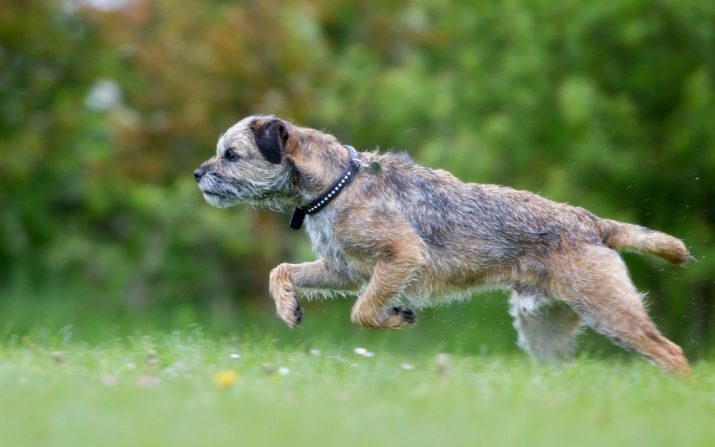
Despite the nondescript appearance of animals, the price in European countries for them is high and has been kept at this level for more than a dozen years. This is explained by the number of border terriers is small, dogs were even classified as rare breeds.
Today, many city dwellers choose this breed of terriers, as they make excellent companion friends.
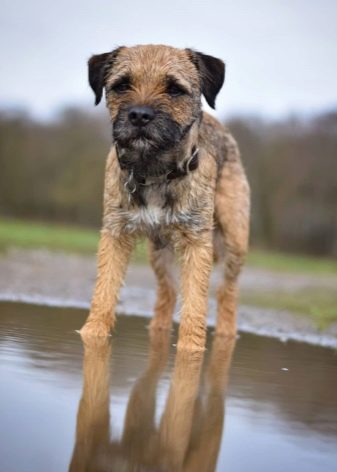
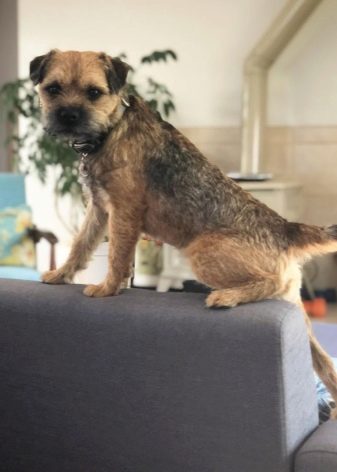
Description of the breed
Seeing a dog of this breed for the first time, you may be surprised that it really is a hunter. After all, representatives of border terriers are quite pretty, small in size and have a decorative appearance. In fact, these animals are very mobile, active and hardy. After a long movement, such dogs are able to dig the ground, dive into manholes and seize prey, entering into a fight with it.
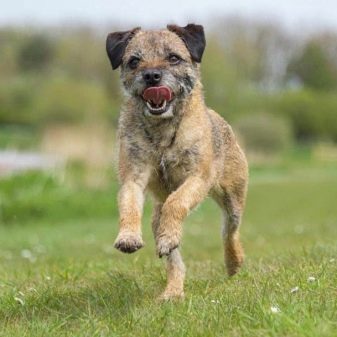
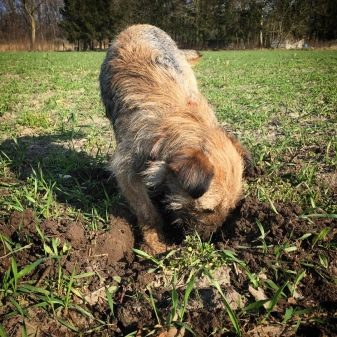
The height of these funny dogs is up to 34 cm at the withers (it is standard for bitches and males). As for weight, females usually weigh from 5.2 to 6.4 kg, and males from 5.9 to 7 kg. A thoroughbred Border Terrier fits the following description.
- Head in shape it resembles the head of an otter, it is flat and small. The forehead is sloping and merges smoothly into the bridge of the nose.
- Muzzle... It is shorter than the forehead line, has a straight wide bridge of the nose and neat rims. The cheeks and slightly tucked eye sockets are placed on the muzzle.
- Nose... Its lobe can be colored either dark brown or black. All dogs of this breed have a proportional nose.
- Teeth... The incisors and canines are especially powerful in the animal. The dog's teeth are set tightly together, forming a "tick" or "scissor" bite.
- Ears... They fit snugly on the sides of the head and hang down on the cartilage. They are small and triangular in shape.
- Eyes... The dog's gaze is alert, interested, attentive, with a lively brilliance. This is what makes it wide-set, almond-shaped eyes. The color of the iris can be black or dark brown. Expressive facial expressions are given to the animal by moving eyebrows.
- The torso. Dogs of this breed are characterized by a strong and correctly built body. The neck is covered with lean muscles, slightly elongated and proportional, with a slight bend. On the body of the animal, the tubercle of the nape and withers is clearly visible. The back merges smoothly into the croup and muscular loin, the sternum with ribs is of medium depth, it is not wide. The line of the abdomen is moderately tucked up and forms a perfectly straight line.
- Extremities. This part of the body is parallel to the body. The paws of the border are straight and elongated, while the hind ones are stronger. The front and hind legs are collected in a lump and pads, which are covered with dense skin. Thanks to this structure of the limbs, the animal moves freely.
- Tail medium in size, strong and plump. It is located high (at the level of the back or slightly higher), tapering towards the end. In purebred representatives of the breed, twisting of the tail into a "donut" is not allowed.
- Wool. The colors of dogs can be different, ranging from blue and tan, light red and ending with a brown shade with gray hair. The hairs of the coat are coarse and dense, while the undercoat is not very thick. Puppies at birth resemble fluffy lumps. Adults have a beard and mustache on their faces.
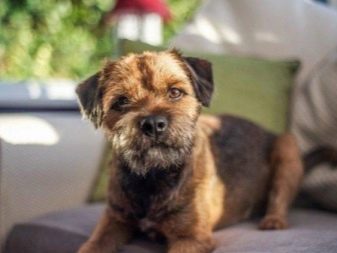
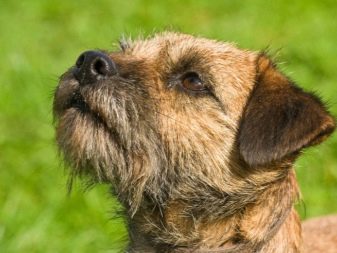
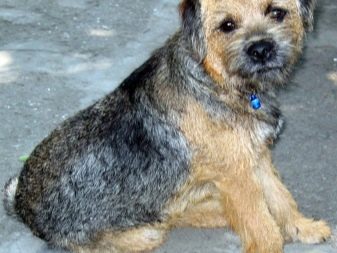
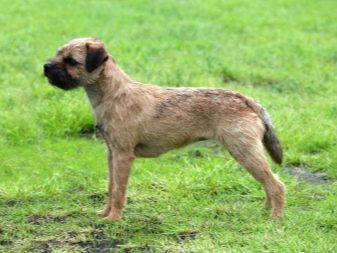
If the pet has any differences with the above description, then this indicates the culling of the breed. The standard is quite strict, so even minor deviations are not allowed. To be sure that the pet is purebred, experts recommend purchasing puppies with a pedigree.
Character
Super mobile and active boarders are demanding for training and long walks in the fresh air.The character of dogs is formed under the influence of realized natural instincts. Since the representatives of this breed are distinguished by an inquisitive disposition, on every walk they try to find a new hunting object for themselves.
Each border terrier has a deep hunting instinct, so being at home, he can be kind, affectionate and positive, and while hunting, he immediately turns into an absolutely ruthless, aggressive and ferocious animal. Even if you grow a pet next to small animals, it is difficult to predict its behavior.
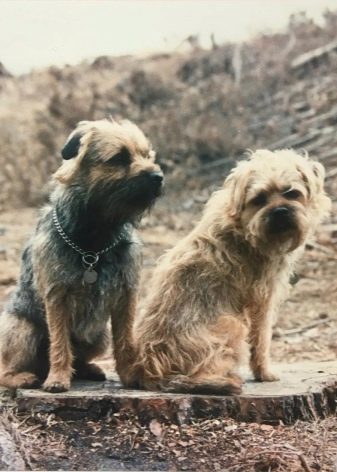
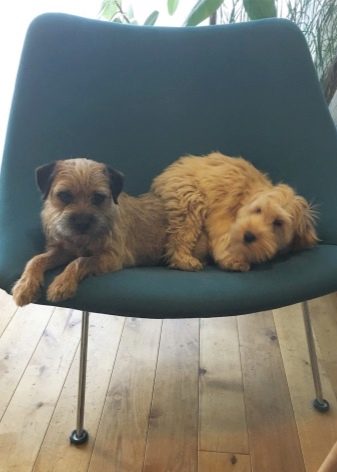
Border Terriers cannot be classified as inveterate couch potatoes who prefer to lie on the couch all day. They are looking for any excuse to go for a walk. Dogs of this breed love to be close to their owner, but they do not tend to impose themselves. It is very difficult for such dogs to endure loneliness, so they are not suitable for keeping on a chain. If the pet is left for a long time without attention and communication with household members, then he will not only become very bored, but also turn into an evil animal.
Since the nature of border terriers is not too simple, it is recommended to have such pets only for those owners who have free time for walking and playing. In addition, the four-legged friend will have to give a lot of love and care, as well as pay attention to classes and training with him. If the owner spends the main part of his life at work, then it is impossible to have such a pet, as this will pose many difficulties for both the animal and the person.
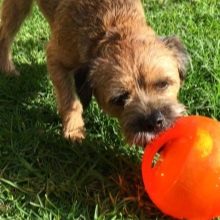


Advantages and disadvantages
The main feature of the Border Terrier breed is the great affection of the pets to the owner. They not only give a positive mood during games and walks, but are also able to fill the house with a benevolent atmosphere. The advantages of the breed include the leadership of these dogs.
Representatives of this breed often take part in social programs.
As for the disadvantages of the breed, they include:
- a highly developed hunting instinct that does not allow other animals (birds and rodents) to be introduced into the house;
- You can walk such dogs only in fenced areas, since any "game" in the form of cats, rodents and birds will be pursued by a hunter.
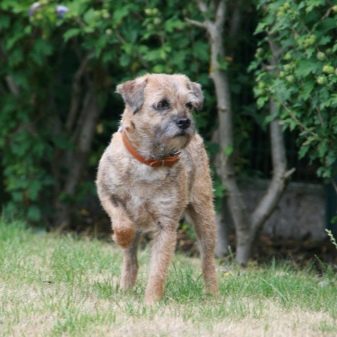
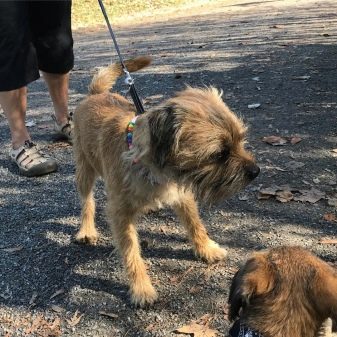
Life span
Borders are renowned for their excellent health, which is why they usually have a life expectancy of 13 to 16 years. Moreover, this indicator may differ, since it depends on hereditary factors and conditions of detention. Often, the life of pets is shortened by diseases such as obesity (caused by improper diet) and dysplasia of the elbow, hip joints. To prolong the life of the dog, the owner must systematically check the health of the pet with doctors and provide him with a balanced diet.
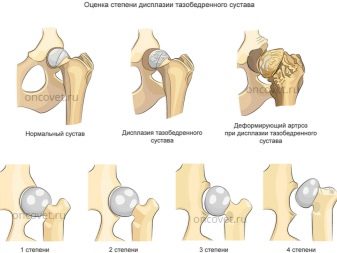

Maintenance and care
Pets of this breed can be kept both in a country house and in an apartment. If the owner is going to have a dog in an apartment, then he must be prepared for the fact that it will have to be provided not only with long walks, but also with physical activity. The acquired pet must be allocated a separate place in the house for rest and sleep. It is desirable that it be away from drafts and heating appliances. At the same time, experts recommend installing special houses for dogs, equipped with a sunbed, mattress and many other items necessary for the existence of the animal.
If we consider caring for border terriers in general, then they are not too whimsical. Care should be taken regularly by trimming the coat. This procedure consists in manually plucking out dead hairs, making it possible to grow new ones. If you do not trim, the dog will begin to shed heavily and a lot of hair will appear in the house. Besides, every 3 days it is necessary to comb out the fur of the animal with a special brush.
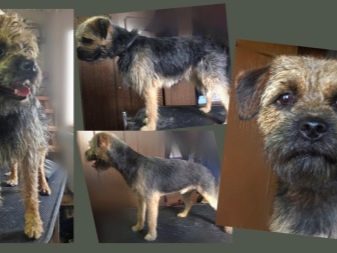

Also, in caring for a dog, you should provide daily examination of the ears and eyes. It is best to do this immediately upon arrival from a walk or hunting. Animals love to run in thickets and grass, which increases the risk of picking up various parasites, including ticks. As the eyes become dirty, they should be wiped with a cotton swab dipped in boiled water, and the ears should be wiped with cotton swabs soaked in baby oil.
To maintain the teeth of an animal in a healthy state, they must be cleaned for preventive purposes several times a week with a special brush and toothpaste.
Besides, it is recommended to treat the pet with soft cartilage as often as possible, which helps to clean the plaque from the teeth... Do not forget about clipping the claws - a similar procedure is performed once a month.
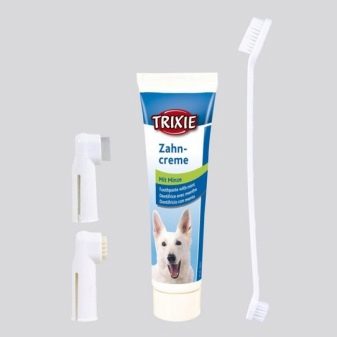
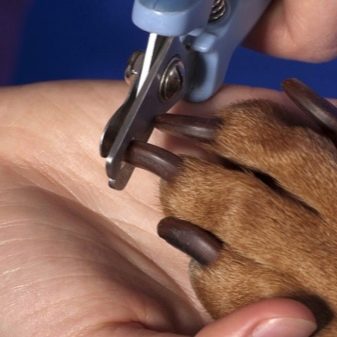
Feeding
Border Terriers are classified as "omnivorous" breeds, since by their nature they are considered real gluttons. Therefore, the owner, composing a diet and a daily menu for them, must correctly calculate the number of meals. It is advisable to feed your pet no more than 3 times a day, dividing the daily rate into small portions. Thanks to this, the stomach of the animal will not stretch and it will not be able to gain excess weight.
It is recommended to feed puppies up to the age of 3 months only with natural food. Starting from 4 months of life, the pet can be introduced to the menu with dry food, after soaking the granules in milk or water... Since representatives of this breed are distinguished by high energy and efficiency, it is necessary to constantly monitor the energy value of the products they consume. Due to this giving them ready-made feed is much easier, since they have all the information about all the components and vitamins in the composition... Many dog breeders also prefer a mixed diet.
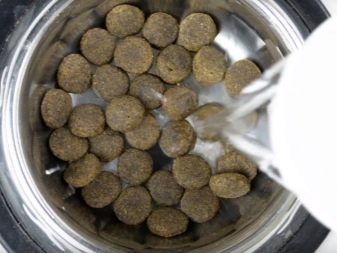

Upbringing
Border Terriers are known for their good intelligence, but they mature much later than other types of dogs. Since these pets have natural stubbornness, when training them, it is worth considering their sensitive nature and not allowing a rude attitude. The animal senses a change in intonation and reacts sharply to any touch.
Therefore, in order to cheer up and calm your pet, it is enough to "put to sleep" approving words and stroking delicately. In addition, it should be noted that boarders react strongly to extraneous noise, therefore they need to try to accustom them to the street and loud noises early.
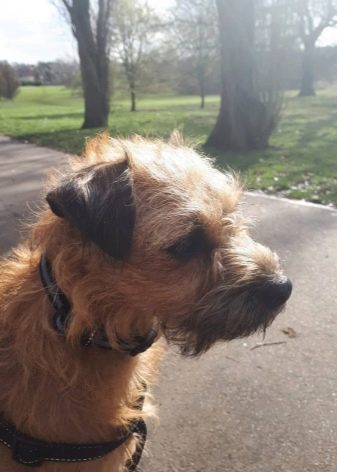
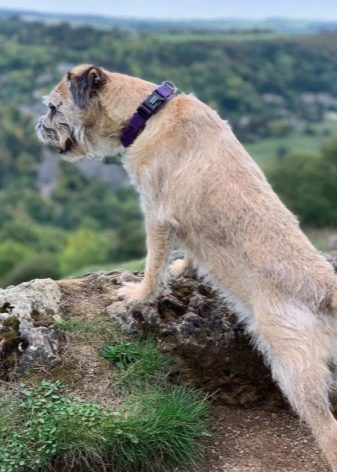
Loud barking in an apartment or house can cause a lot of inconvenience. To prevent this, experts recommend teaching a dog to bark exclusively on command. The upbringing of a pet should be started immediately after it appears in the house. To simplify the learning process, it is best done in a playful way. Do not overload the dog with long training.
For boarders, both basic programs and special ones designed for training "athletes" and "hunters" are well suited.
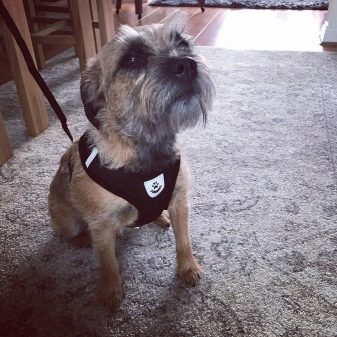
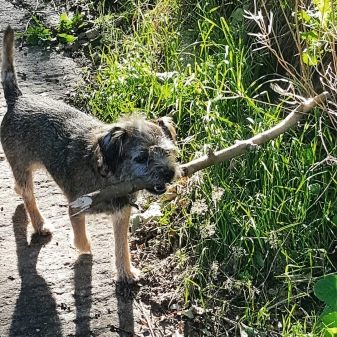
Owner reviews
There are many, both positive and skeptical, reviews about the Border Terrier dog breed. Most dog breeders distinguish in such pets loyalty, affection for the owner and friendliness. But they can only be obtained if there is good contact with the pet. For many, such friendliness may seem too intrusive, so if the owner is not ready for such a "relationship", it is better not to start this animal.
Some breeders also dislike the fact that border terrier requires a special approach to training, since it is considered a gregarious animal and does not know how to come into contact with representatives of other breeds and other pets.
But feeding such a pet will not be difficult, since the dog is unpretentious to food.

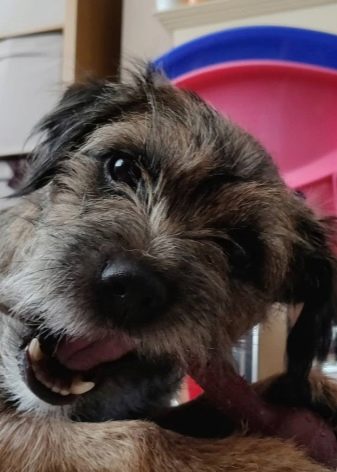
For more information on the Border Terrier, see the next video.






































